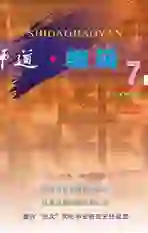语文教学“工具性与人文性”的思考
2013-04-29梁海珊
梁海珊
在笔者从教的这十几年间,广州市初中英语教学改革发展迅猛,各种课型已初步具备科学的模式。如阅读课的基本模式是Pre-reading to find questions or the background knowledge(阅读导入了解背景知识)→ Scanning and skimming to find the main idea of the passage(泛读查找文章大意)→ Intensive reading to solve more difficult questions by themselves or in groups(细读解决文章难题)→ Practicing the reading skills(拓展和提升)→ Reflecting and evaluating themselves(反思与评价)。“研学后教”教学模式倡导学生根据“研学案”先学,再通过讨论解决难题,最后教师进行点拨提升。因此,笔者制定出“研学后教”阅读课学习路线图。(如图)
其中,“课前学习”(先学)是“研学后教”课堂模式的特色之一。《牛津英语(广州版)》教材中的阅读篇章较长,生词量较大,在农村中学中,相当一部分学生觉得阅读有困难。因此,前置性学习任务即学生的预习任务一般为学习重点词汇和记忆。同时,对于阅读有一定背景难度的话题,前置性学习任务也可以是研究性学习。在“教师点拨能力提升”(后教)环节中,教师主要解答学生经过小组合作学习(研学)还是不能解决的问题,同时利用话题进行语言能力的拓展和提升训练。“反思与评价”其实穿插在所有任务进行之中,包括教师对学生的行为作出口头的、即时的评价,学生对自己学习效果和小组成员之间的评价以及当堂课的终结性评价。评价要侧重肯定学生的学习效果,激发学生的学习兴趣,以鼓励学生向更高层次继续学习。下面以《牛津英语(广州版)》八年级上Unit 6 Reading A为例来说明基于“研学稿”编写理论所进行的阅读教学。
Unit 6 Reading A 研学稿(学生版)
一、研学目标
1. 通过阅读的三步骤的引导,能读懂文章内容并完成阅读任务。
2. 学会下列重点单词的音形义:still,enough,push,require,late,remove,hang,attract,rest,divide,traditional.
3. 理解和欣赏中国传统文化。
二、学习重点
阅读技能的提升。
三、学习难点
复述课文大意(retell the story)。
四、学习路线图
■→
■→
■→
■
在对学习目标的描述,特别是知识目标和语言能力目标中,应充分考虑初中生的理解力和判断力,指令性的动词应该是直接的、明确的。“掌握”“了解”等词会让学生感到模糊不清,而“会…”或“能…”等词则更加直接易懂。
课前预习及准备。
中英互译:
1. 仍然
2. 足够地
3. 推动
4. 需要,依靠
5. 接近末期的,迟到
6. 拿开,去掉
7. 悬挂,吊
8. 吸引,引起…的好感
9. 剩余部分,其余
10. 分开,分配
A. cormorant
B. raft
C. swallow
D. be used to do
E. remove...from...
F. divide...between A and B
学生根据预习作业判断和检查自己对新单词的学习情况。
五、研学步骤
(一)Pre-reading:Background and main idea(了解背景以及段落大意)
Step 1:Watch a video about cormorant and try to answer the questions(背景了解):
1. What are the old men doing on the river?
2. What is the job of cormorants?
3. Can you describe this kind of bird?
Step 2:Look quickly at the article and finish A1.(The main idea of each paragraph 段落大意)
阅读前任务(激活背景知识及大意理解)——自主学习。
(二)While-reading:Coopearive learning(合作研学完成阅读任务)
Step 3:Read the story para. and try to answer the questions(分段阅读):
Step 4:Find out the main idea of the article(总结文章大意)
A. Cormorants are large birds which can swim well under water and catch fish.
B. Wang Daming is a cormorant fisherman, although he is over 60 now but still working.
C. Cormorant fishing is a traditional Chinese skill, but it is now disappearing in the modern world.
D. Cormorants swim down and catch fish, the fisherman removes the fish from the birds mouths.
拼图式阅读任务,把握文章结构和主要内容——合作学习。
(三)While-reading 2:self-learning(自主研学完成细节理解)
Step 5:Detailed reading(细节理解)
(1)How do Damin and his cormorants word?
①Damin on his raft.
②Grass around the neck of each bird.
③Birds swim down and catch fish.
④Birds fish to raft.
⑤Fish .
⑥Fish into basket.
⑦Fish are and .
(2)Finish P83 A4.
把握细节,理解文章难点——自主/合作学习。
(四)Post-reading(研学拓展:由阅读理解上升到口头表达)
Step 6:Use the key words to retell story.
以口头形式对文章主要内容进行复述,提升语言应用能力,并对文章所涉及的内容进行文化意义上的深层思考——合作学习,教师点拨。
(五)Feedback(研学反馈:笔头检测)
完型填空一篇。研学反馈,检测学生是否能达成学习目标要求——自主学习。
Step 7:Homework
Write your oral practice into a composition, using the key words we learned tody.
责任编辑魏文琦
